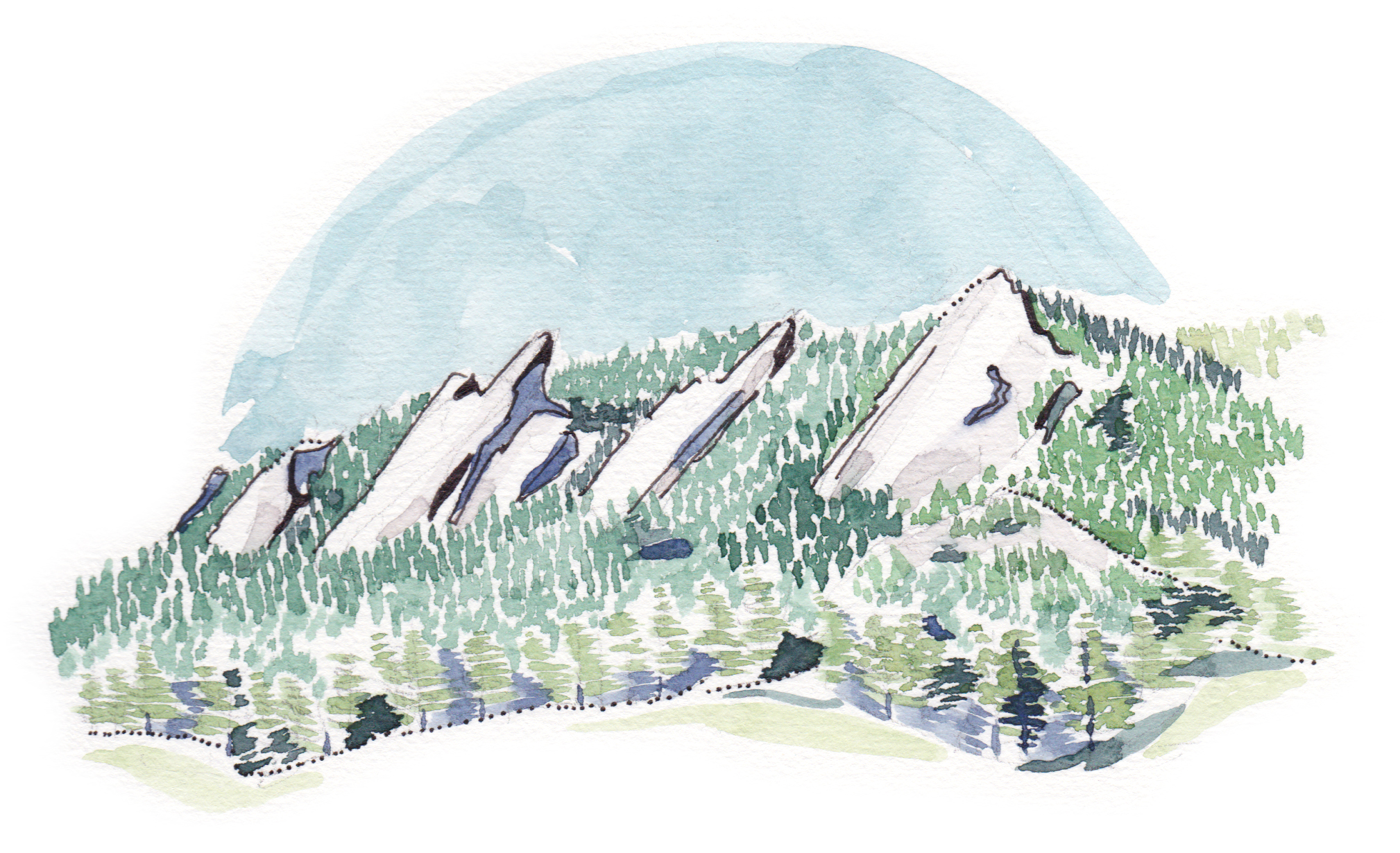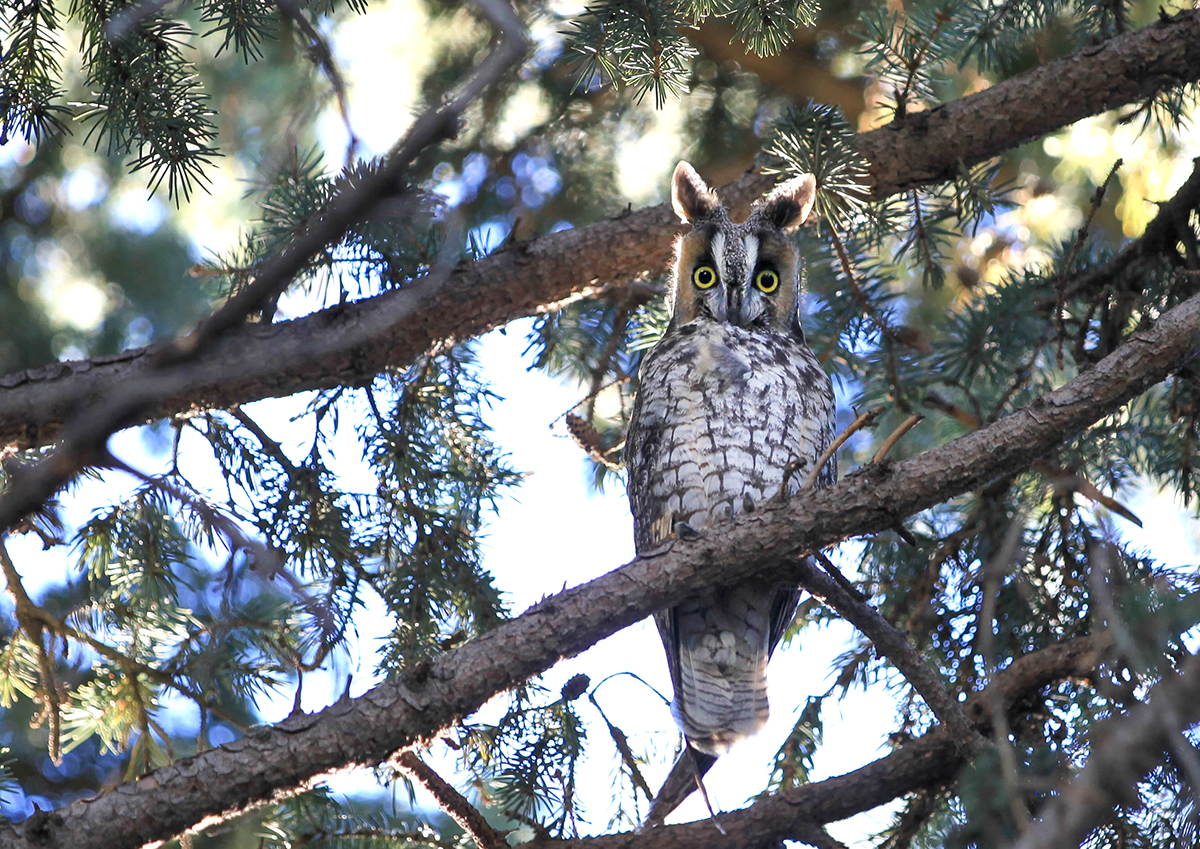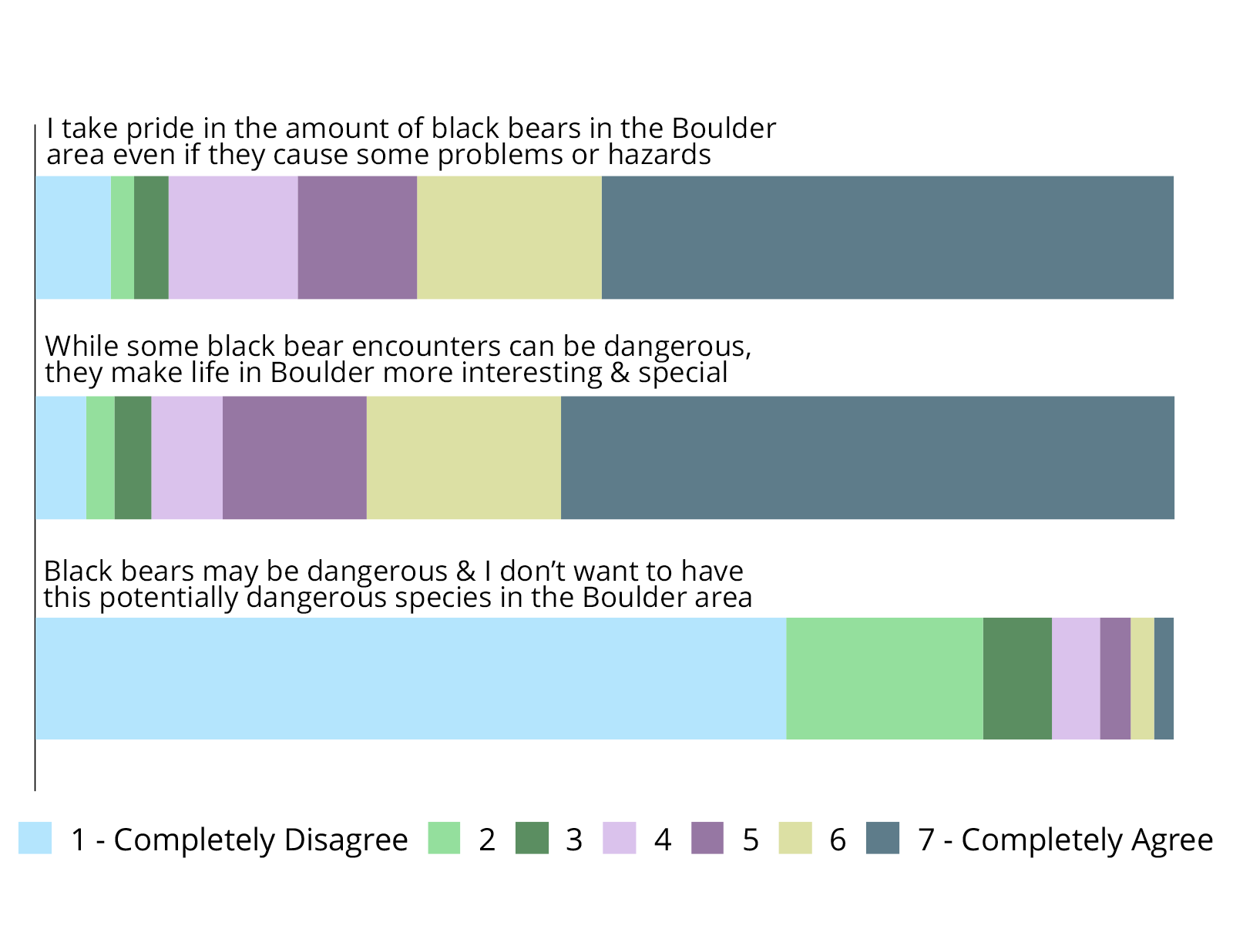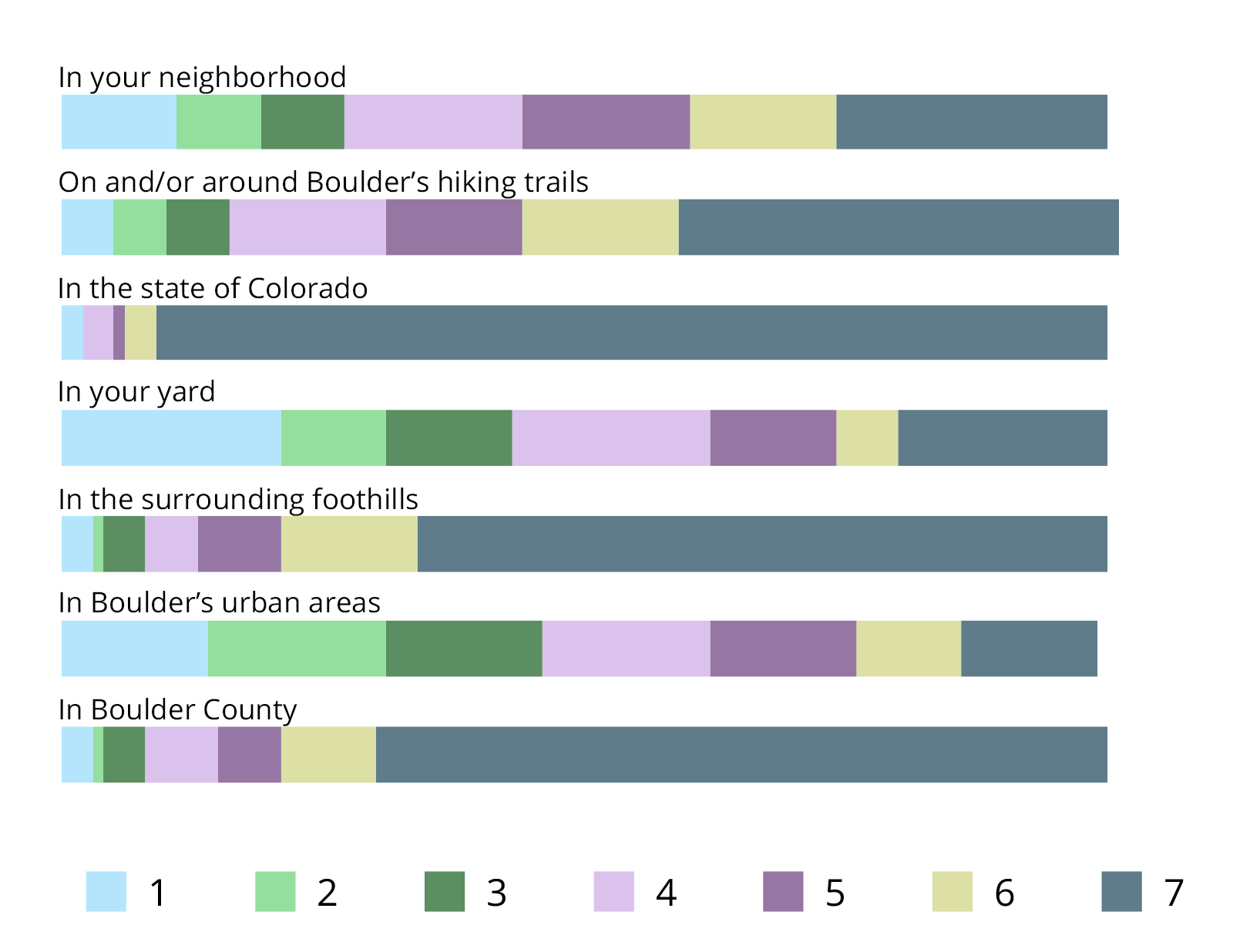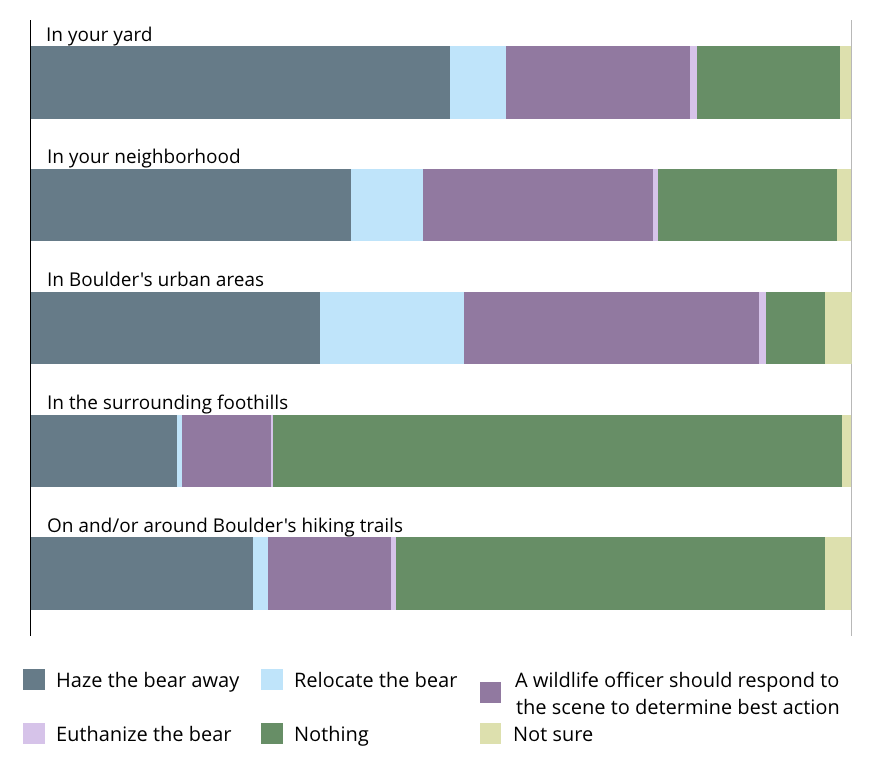Where the western Great Plains greet the eastern foothills of the Rocky Mountains
Located in Colorado’s Front Range, Boulder is a gorgeous mountain town brimming with wild nature. Here, the western Great Plains greet the eastern foothills of the Rocky Mountains. This region has some of the most diverse wildlife populations in all of Colorado, with over 100 breeding bird species, more than 200 types of butterflies, at least 64 species of mammals, and countless reptiles, amphibians and other insects.
Also in abundance in Boulder: humans. Similar to many cities in Colorado’s Front Range, Boulder is experiencing a rapid human population growth. In the past 10 years alone, Boulder has grown from a population of 98,305, and steadily increasing to over 108,000 today. Boulder is best known for its active, outdoorsy lifestyle, expansive open spaces and recreational areas, progressive politics, a booming startup company culture, and don’t forget about the 300+ days of sunshine each year. It’s also home to the University of Colorado, which welcomes roughly 33,000 students to its campus each year.
All illustrations by Erin Hauer for the Bears & People Project
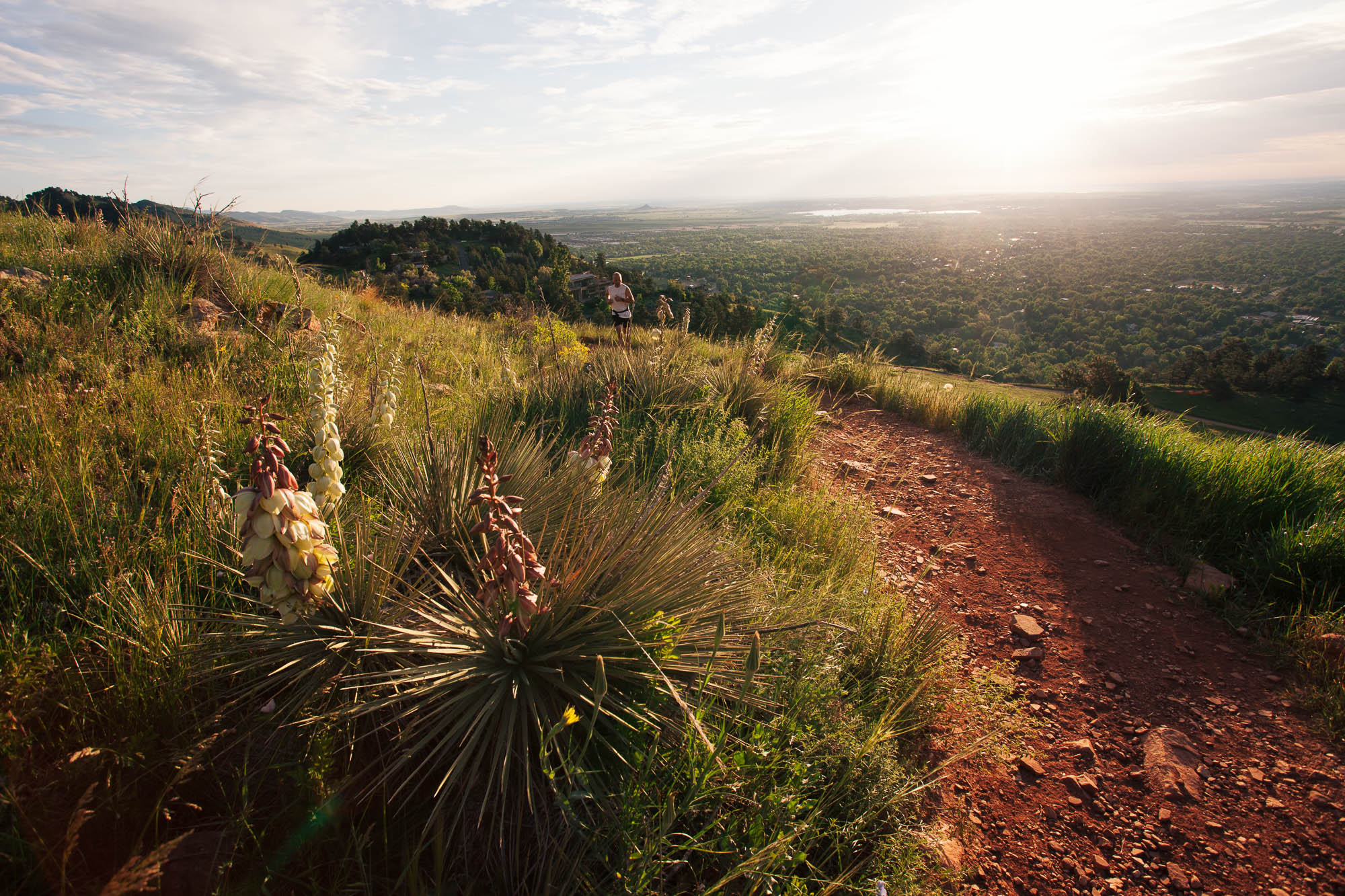
The City of Boulder has preserved and protected over 45,000 acres of land, which includes 151 miles of trails, wildlife habitats, and unique geologic features.
Because Boulder takes such great pride in its natural landscape, the City of Boulder made the preservation of its natural areas and mountain backdrop a priority. In 1967, Boulder became the first city in the United States to implement a tax that would protect the area from massive population growth. The 0.40 of a cent sales tax was implemented specifically to allow the city to buy, manage, and maintain open space. More than 50 years later, the city of Boulder has preserved and protected over 45,000 acres of land. This includes 151 miles of trails, wildlife habitats, and unique geologic features.
Keeping up this impressive landscape is no easy task. In addition to Boulder’s increasing population, the city’s Open Space & Mountain Parks see more than 6.25 million human visits per year, based off a 2018 estimate. Consider this in comparison with the nearby Rocky Mountain National Park, which received 3.4 million visits that same year, or Yellowstone National Park’s 3.5 million visits, and one may worry that Boulder’s open spaces are being loved to death. Balancing human recreation opportunities with land and wildlife preservation is no easy feat.
For some species of wildlife, Boulder’s strong human presence leaves them with no other option but to adapt to the changes, or retreat. Fortunately for the black bear, the animal’s omnivorous diet has allowed it to adapt to urban life quite well. That goes without saying that their ability to roll with the punches also unravels numerous other concerns that fall under wildlife protection and community safety.
Respondents’ current residence
Respondents’ age
Learning about locals’ experiences living with, and values of, black bears.
To learn more about locals’ experiences living with, and values of, local black bears, I solicited community feedback from individuals residing within Boulder County from February 17 – March 11, 2018. I ended up with 368 overall respondents, leaving me with statistically significant sample sizes for the majority of my questions.
The questions were optional, and of the 327 people who answered the question asking how they found out about this survey, 89 came from Facebook, 60 from online neighborhood groups like NextDoor, 59 from email, 28 from friends or family members, 22 from my personal requests, and 18 came from other options like Craigslist or the respondent’s place of work. The remaining 60 came thanks to a Daily Camera article that reporter John Bear (which for the record, is his real name) wrote about my survey and overall thesis project. At the time of survey completion, 65% of respondents said they were currently living within Boulder’s city limits, and ages ranged from 18 years old to over 75 years old.
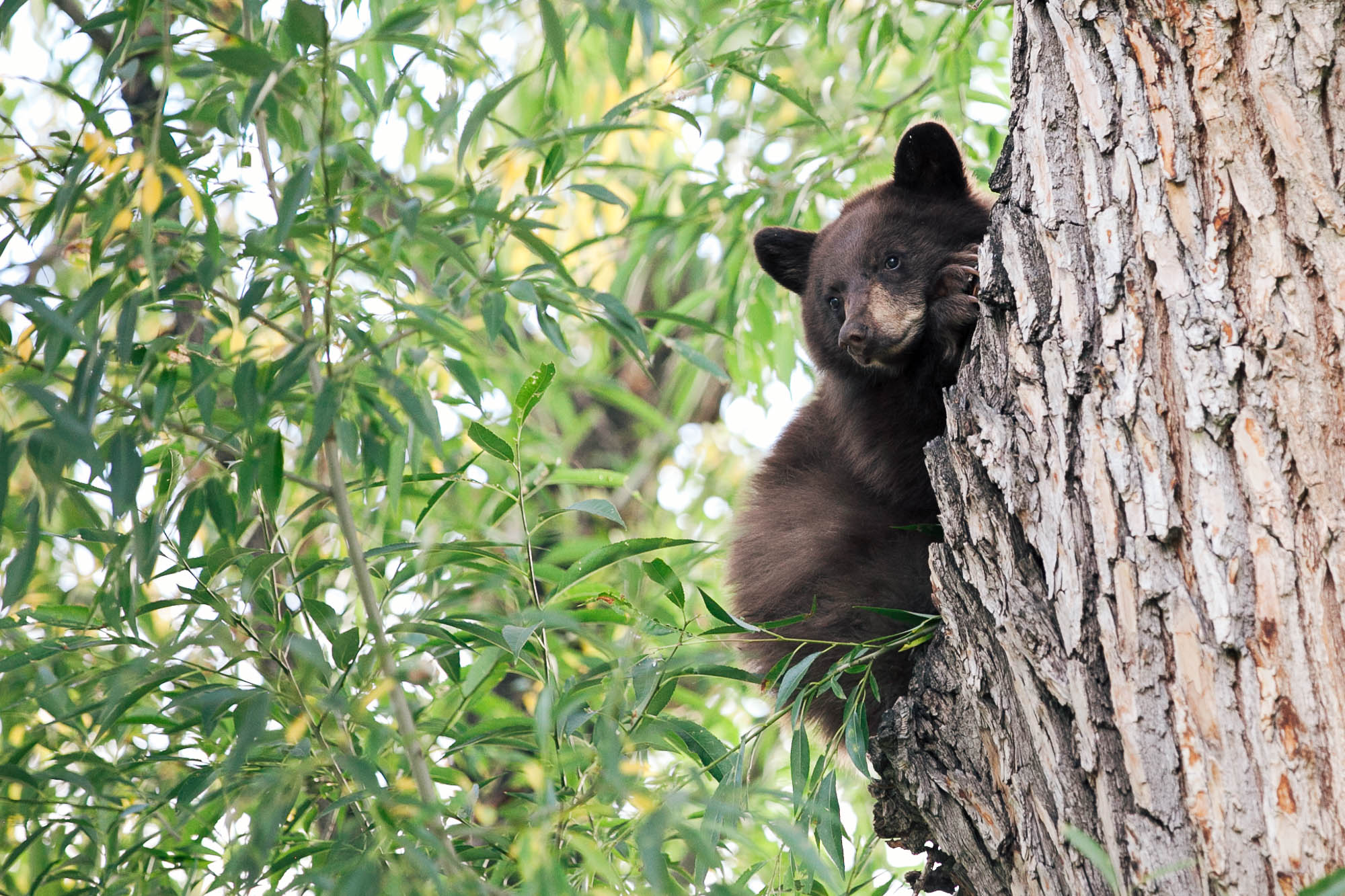
Boulderites proved to be quite tolerant and supportive of local black bears.
Survey data did in fact confirm my beliefs that the Boulder community was rather tolerant, supportive, and placed high value in black bears. To gauge tolerance levels, I asked respondents a series of three questions. When asked how much the respondent agreed with the following statements on a scale of 1-7 (1 = I completely disagree, 7 = I completely agree), the results of 334 people came in as displayed to the right. The majority of people take pride in living with black bears or find living with black bears to be interesting or special, even if they may be dangerous, cause problems, or are hazardous. Additionally, two thirds of respondents completely disagree with the statement “Black bears may be dangerous, and I don’t want to have these potentially dangerous species in the Boulder area.”
In a separate question, I asked if survey respondents had ever had a negative interaction with a black bear, 93% of the survey takers answered no. Initially I expected this number to be higher, but realized in addition to truly not experiencing negative interactions, that residents could also be saying no simply because they wanted to protect bears if there was a prior conflict. Or, because they may not perceive incidents like bears getting into their trash bins to be negative. This especially would back up the questions from the top right that demonstrate residents have a high tolerance of black bears.
Continuing with tolerance of black bears, I asked respondents what actions should be taken if a black bear appeared in the following areas: in the respondent’s yard, neighborhood, Boulder’s urban areas, in the surrounding foothills, and on and/or around Boulder’s hiking trails. 335 individuals answered this question and the majority of the individuals selected “haze the bear away” or to do “nothing,” while very few selected “euthanize the bear” or “relocate the bear.” There seems to be fairly common consensus that the bear should be left alone when it is in its natural habitat, but when it’s nearby some type of urban area or human development, it should either be hazed away, or a wildlife officer should respond to the scene and determine the appropriate plan of action.
Wildlife Policies in Boulder
In terms of wildlife policies, respondents were very supportive of expanding the Bear Protection Ordinance. Below, over 60% of the 345 people who answered this question said the ordinance should be expanded to wherever there is documented and ongoing bear activity, while 30% said it should be expanded to wherever the City of Boulder deems appropriate. Combined, that means over 90% of that question’s respondents would like to see the Bear Protection Ordinance expanded to some extent. This data has proven to be useful and was included in a memo to Boulder City Council by Urban Wildlife Conservation Coordinator, Valerie Matheson.
Which of the following statements about the Bear Protection Ordinance do you agree with?
To gain a stronger understanding of residential support and opposition around the 2-Strike Policy, I asked survey takers to select which of the following statements they agreed with. Below, of the 332 respondents, more than half said they’d like to see looser, or no, penalties for bears. 25% felt wildlife officers should have the ability to take action as they see fit. This specific option reflects on the respondents’ trust in the wildlife officers, as well as an urge for regional wildlife officers to treat incidents on a case by case basis instead of conforming to a statewide policy. Numerous respondents followed up with me either via email or in the survey question’s write-in option to provide further clarification to that point.
Which of the following statements about the 2-Strike Policy do you agree with?
Snowball sampling was expected and considering I would be unable to prevent any bias from taking place, I added a question at the end of the survey that would attempt to measure that potential bias. The question asked respondents, “Are you a member, volunteer, or employee of any wildlife-related groups? This could be anything from a non-profit organization such as the Sierra Club, a government agency such as Colorado Parks & Wildlife, or a community group created by local residents.” Of the 331 individuals that answered this question, just 24% answered yes. When asked to list the groups they belonged to, 46 individuals said they belonged to a nonprofit organization that worked in some way to protect wildlife, for example the Sierra Club, The Nature Conservancy, WWF, or Boulder Bear Coalition. 11 belonged to Boulder City or County Open Space, 2 to Colorado Parks and Wildlife, and the remaining 10 were a mix of recreation-centric groups such as Backcountry Hunters and Anglers or Trout Unlimited.

